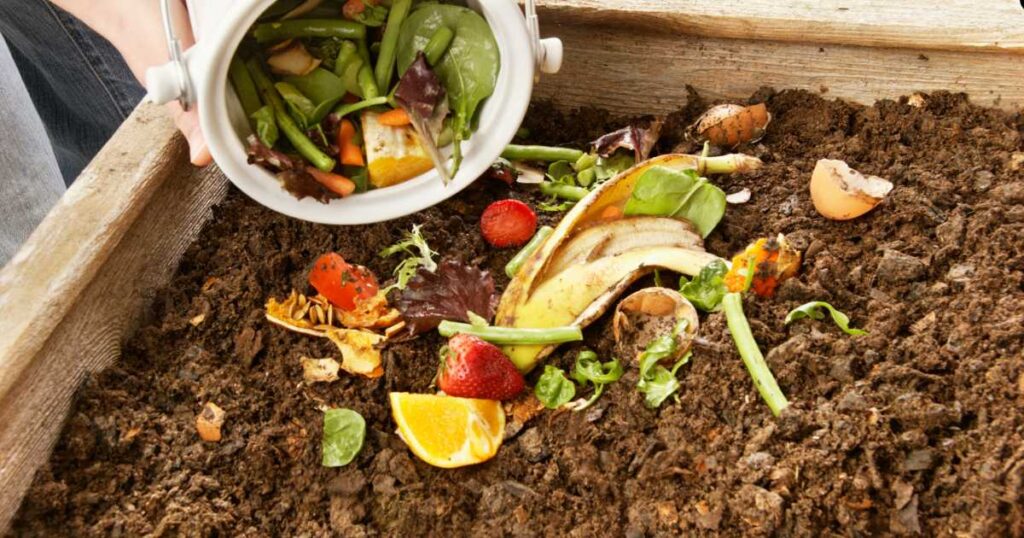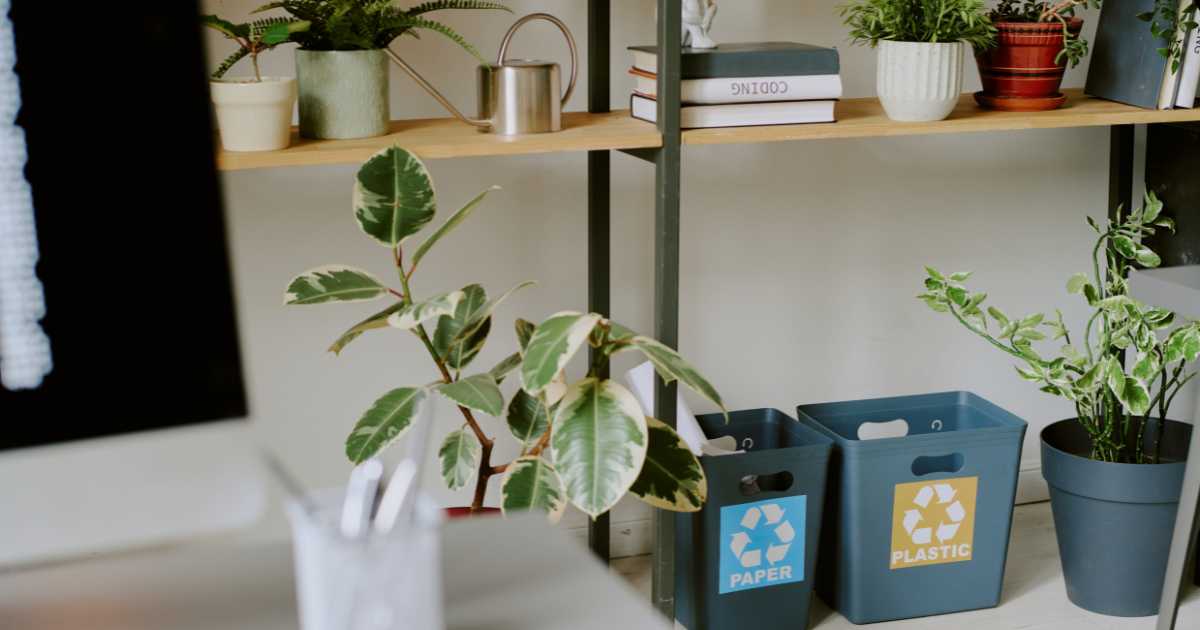In today’s rapidly changing world, environmental sustainability is no longer optional—it’s a necessity. As more people recognize the profound impact of human actions on our planet, companies are being encouraged to adopt greener practices. Among these, eco-friendly office waste management takes center stage.
So, how can you engage your team in this mission? Educating employees about responsible waste management not only reduces your workplace’s carbon footprint but also fosters a culture of environmental consciousness and teamwork. This guide walks you through the steps to transform your office into a sustainable, eco-friendly workplace!
Why Eco-Friendly Office Waste Management Matters?
Understanding the “why” behind sustainable practices is crucial. Educate your employees about the environmental consequences of waste—landfills overflowing with non-biodegradable materials, oceans polluted with plastics, and the loss of valuable natural resources.
When employees see the bigger picture, they’ll be more motivated to change their habits. Highlight how their actions—no matter how small—can lead to significant environmental benefits, such as conserving resources, reducing greenhouse gas emissions, and promoting cleaner ecosystems.
Types of Office Waste: Know What You’re Dealing With
Start with a breakdown of the common types of waste found in an office environment:
Paper Waste: Printer paper, notebooks, and old documents.
Plastics: Disposable cups, food containers, and packaging materials.
Electronic Waste (E-Waste): Old computers, cables, and printers.
Food Waste: Leftovers from meals and coffee grounds.
Educating your team on these categories helps them understand the importance of proper waste segregation. This knowledge makes recycling and disposal processes more efficient and eco-friendly.

Building an Office Recycling Program: A Step-by-Step Guide
An organized recycling program is the backbone of sustainable office waste management. Here’s how to create one that works:
Step 1: Planning Your Recycling Program
Form a Green Team: Recruit passionate employees to spearhead the initiative and act as ambassadors.
Identify Recyclables: Focus on materials like paper, cardboard, plastics, aluminum cans, and electronics. Not sure what items qualify? Here’s a guide on what can go in a dumpster rental.
Research Local Recycling Facilities: Contact nearby centers to determine what they accept and any specific guidelines they may have.
Set Goals: Define clear objectives, such as reducing waste by 20% or achieving 90% employee participation.
Step 2: Setting Up Recycling Bins
Choose Strategic Locations: Place bins in breakrooms, near printers, and in other high-traffic areas.
Label Clearly: Use color-coded bins or detailed labels to specify what goes where. For example, blue for paper, green for plastics, and yellow for cans.
Provide Instructions: Include simple visuals or infographics to show the correct way to dispose of materials.

Step 3: Encouraging Proper Usage
Educate Employees: Host short workshops or send out informative emails explaining the program.
Prevent Contamination: Teach employees to rinse food containers and avoid mixing recyclables with non-recyclables.
Gamify Recycling: Introduce fun challenges or rewards for teams that recycle the most.
Step 4: Sorting the Materials
Designate a Sorting Space: If possible, allocate a corner of the office for sorting recyclables before they’re sent out.
Regular Checks: Assign team members to monitor bins and ensure proper sorting.
Partner with Professionals: Collaborate with waste management companies for accurate sorting and collection.
Step 5: Transporting Recyclables
Schedule Pickups: Coordinate regular pickups with local recycling centers.
Track Progress: Keep records of the quantities recycled to measure the program’s impact.
Share Success Stories: Celebrate milestones and share results with your team to encourage continued participation.
Beyond Recycling: Transforming Your Office into a Green Haven
Recycling is just the start of your sustainability journey. To truly make your office a leader in eco-friendliness, consider adopting these additional practices:
Go Digital
Minimize paper usage by transitioning to digital workflows, cloud-based storage, and e-signatures. Use project management tools and online collaboration platforms to reduce the need for printed documents.
Implement a Compost System
Place clearly labeled compost bins in communal areas for food scraps and coffee grounds. Partner with local composting services or create a small on-site compost setup if space allows.

Switch to Reusable Items
Replace disposable coffee cups, water bottles, plates, and cutlery with reusable alternatives. Provide employees with branded, reusable items as part of your green initiative.
Encourage Green Commuting
Offer incentives like parking discounts for carpoolers or subsidies for public transportation users. Provide secure bike racks and even shower facilities for employees who bike to work.
Conduct Energy Audits
Partner with experts to assess your office’s energy consumption. Switch to energy-efficient appliances, LED lighting, and smart thermostats. Promote switching off lights, computers, and other electronics when they’re not in use.
Host Sustainability Workshops
Bring in environmental experts to host sessions on eco-friendly practices. Include practical demonstrations on waste segregation, water conservation, and energy-saving tips.
The Benefits of an Eco-Friendly Office Culture
Engaging your team in sustainable practices reaps numerous rewards, including:
Reduced Environmental Impact
By cutting waste and conserving resources, your office contributes to a healthier planet.
Cost Savings
Lowering energy consumption, recycling, and reducing reliance on disposables lead to long-term savings.
Enhanced Employee Morale
Employees feel a sense of pride and unity in working toward a shared goal. This boosts overall job satisfaction and retention.
Improved Reputation
Customers and clients are more likely to support businesses that prioritize sustainability, enhancing your brand image.
Frequently Asked Questions
What are the first steps to make my office more sustainable?
Start by assessing your current practices. Begin with basic steps like recycling, reducing paper usage, and switching to energy-efficient lighting. Then, look into more advanced strategies like digital workflows, composting, and encouraging green commuting options.
How can I encourage my team to participate in sustainability efforts?
Engage employees by providing clear information on the benefits of sustainability, both for the environment and the office. Offer incentives, create challenges, and organize educational workshops to build awareness. Make sustainability part of the company culture to ensure long-term participation.
What can I do to reduce paper waste in my office?
Transition to digital workflows by using online collaboration tools and cloud storage. Encourage electronic document sharing, e-signatures, and virtual meetings to limit the need for printing. If printing is necessary, use recycled paper and ensure that all printers are set to print double-sided.
Can small offices really make an impact on the environment?
Absolutely! Every office, regardless of size, can make a significant difference. Small steps, when implemented consistently, can lead to reduced waste, energy savings, and a cleaner environment. It’s about creating a culture of sustainability, which adds up over time.
What types of reusable items should I introduce in my office?
Replace disposable cups, plates, and utensils with reusable options. Encourage employees to bring their own water bottles and provide branded reusable cups or mugs. Also, consider using cloth napkins instead of paper towels in kitchen areas.
How can we manage composting in an office environment?
Set up clearly labeled compost bins in communal kitchen or break areas for food scraps, coffee grounds, and other compostable waste. If you don’t have a local composting service, check if your building offers it, or create a small composting area on-site for organic waste.
How can I promote green commuting?
Offer incentives like parking discounts for carpoolers or subsidies for public transport users. Provide secure bike racks and shower facilities to encourage employees to bike to work. Organize carpooling options and create flexible work-from-home policies to reduce commuting.
What is an energy audit, and why is it important?
An energy audit is an evaluation of your office’s energy use to identify areas where you can reduce consumption. It involves checking lighting, heating, cooling, and appliances to see where energy-efficient upgrades can be made. This can help lower your office’s energy bills and reduce its environmental impact.
How can we get started with hosting sustainability workshops?
Reach out to local environmental organizations or sustainability experts who can lead workshops. You can also create in-house events where employees share tips and best practices. Focus on practical advice like reducing waste, saving energy, and choosing eco-friendly products at work and home.
Conclusion
Implementing eco-friendly waste management practices goes beyond operational improvement—it’s a pledge to a sustainable future. With careful planning, active employee participation, and a clear vision, your office can take the lead in environmental responsibility.
Begin today, and motivate your team to become sustainability advocates, making a positive difference both within the workplace and in the wider world!
